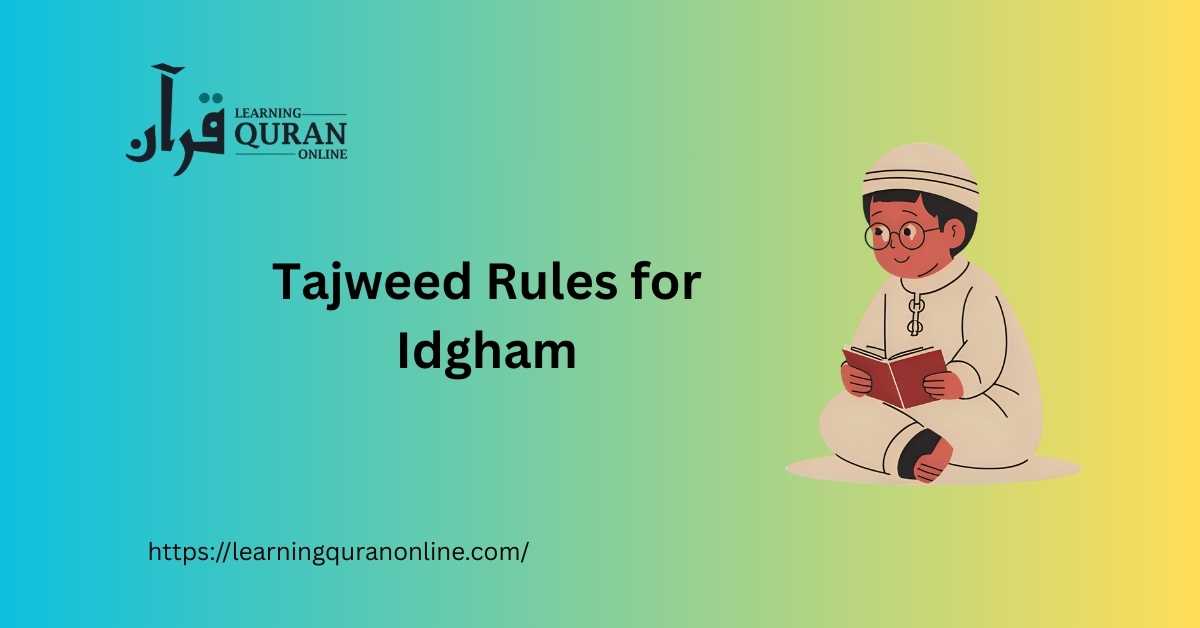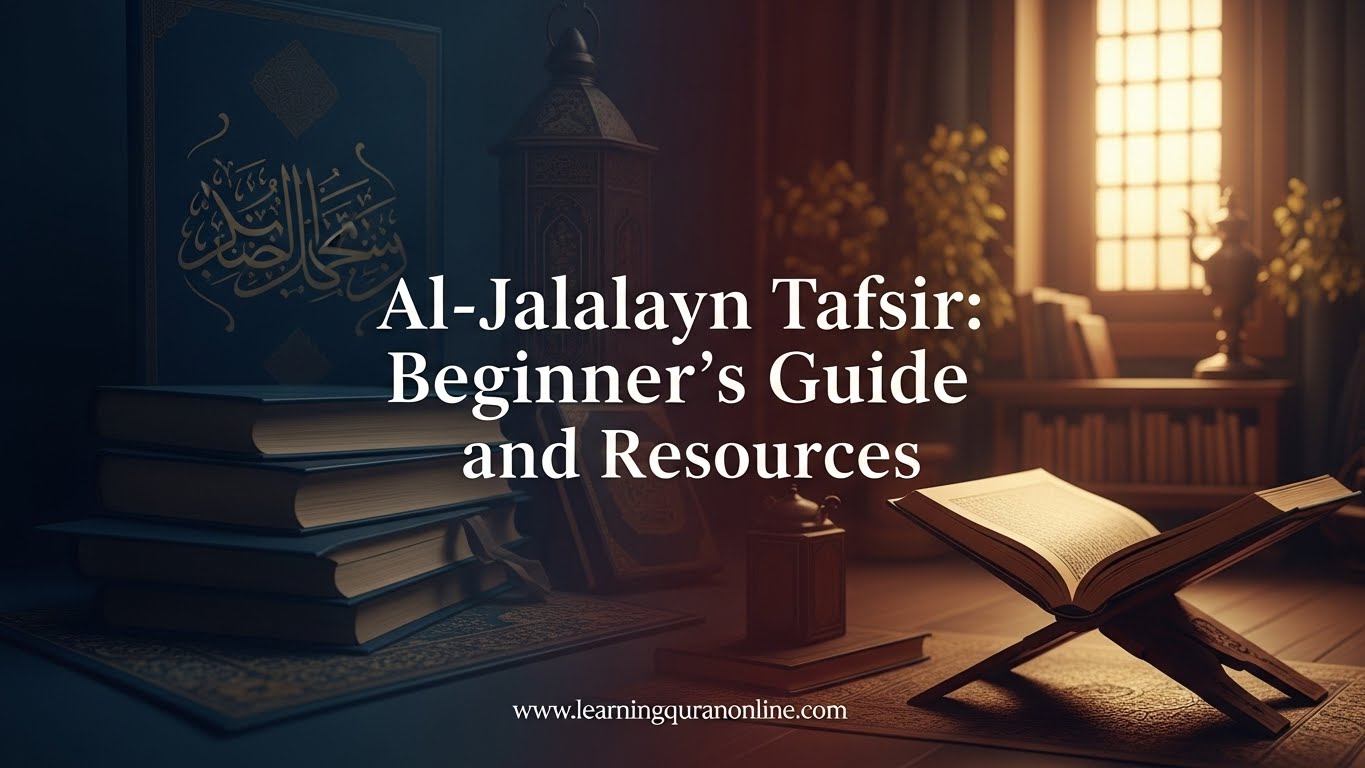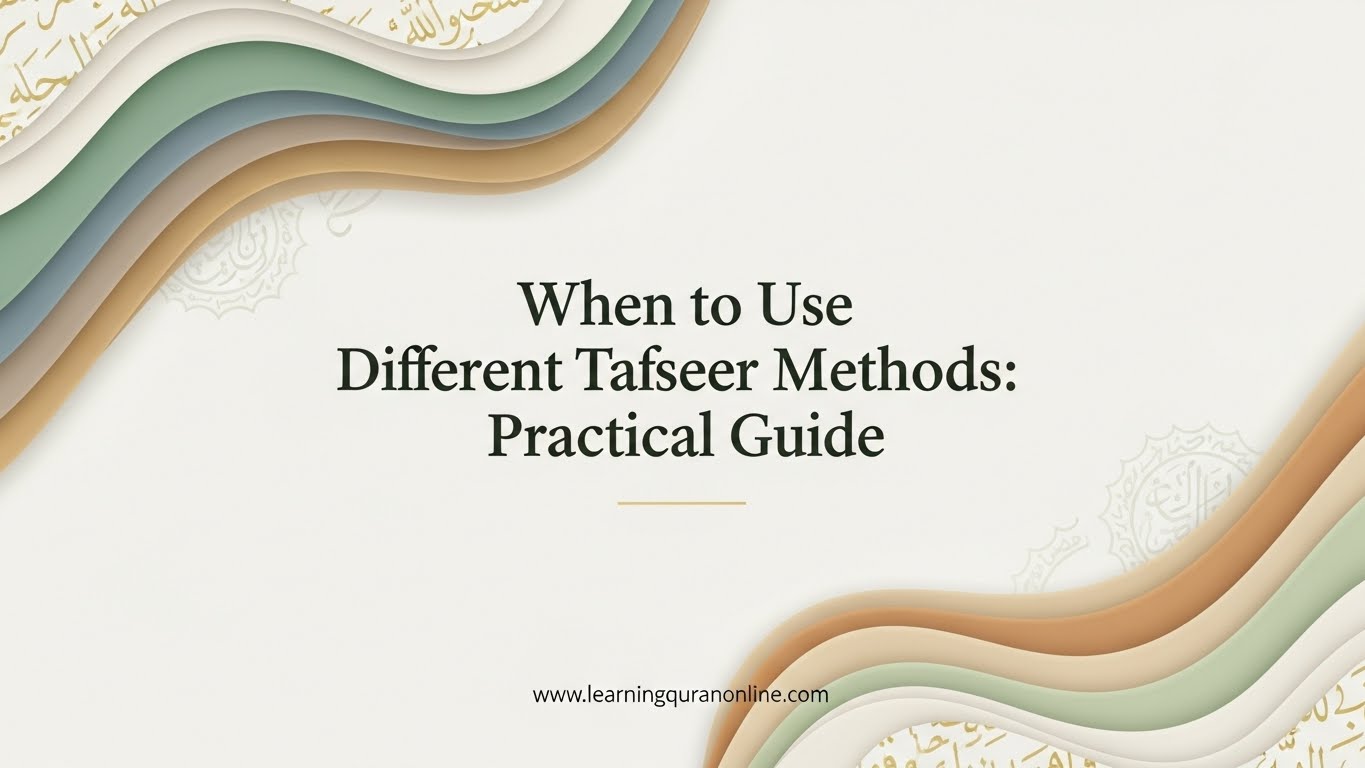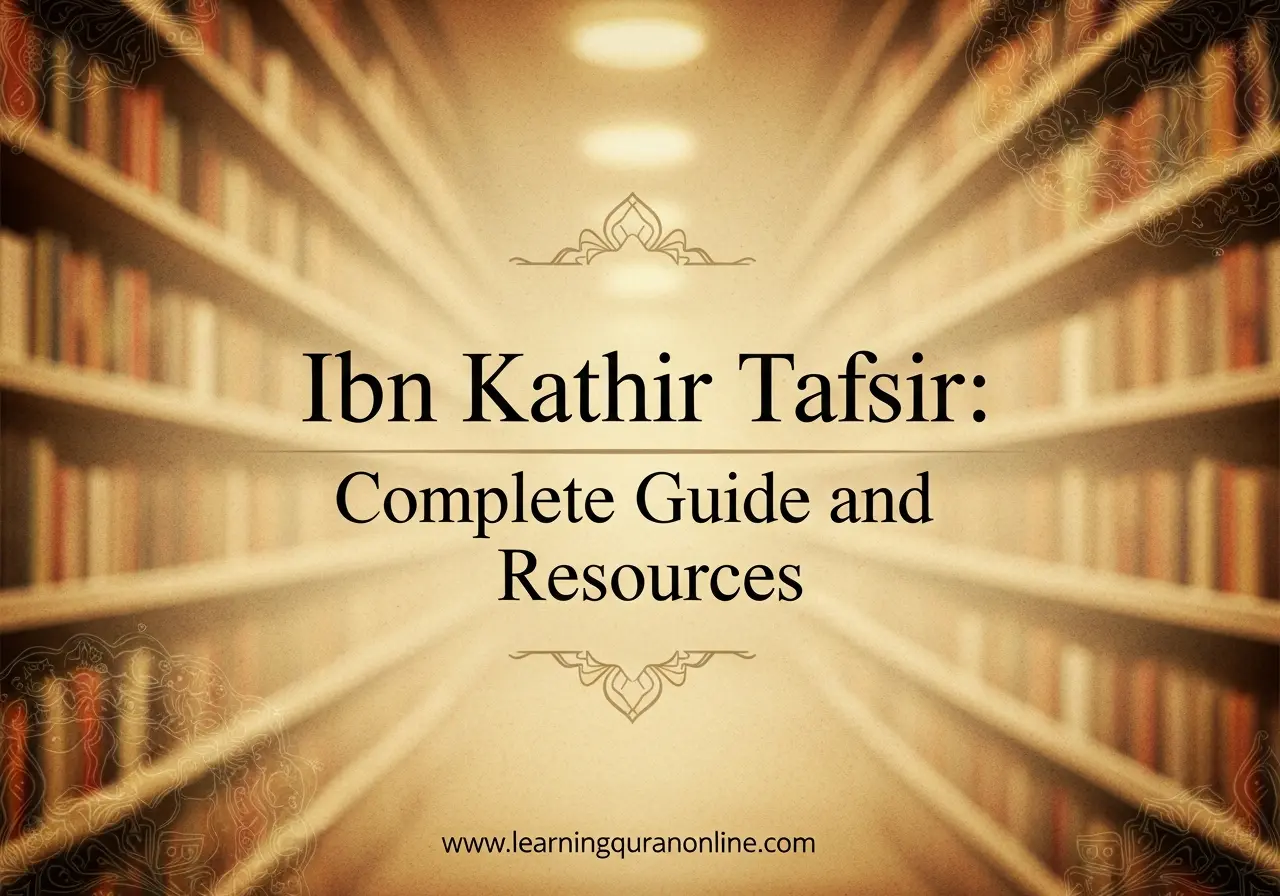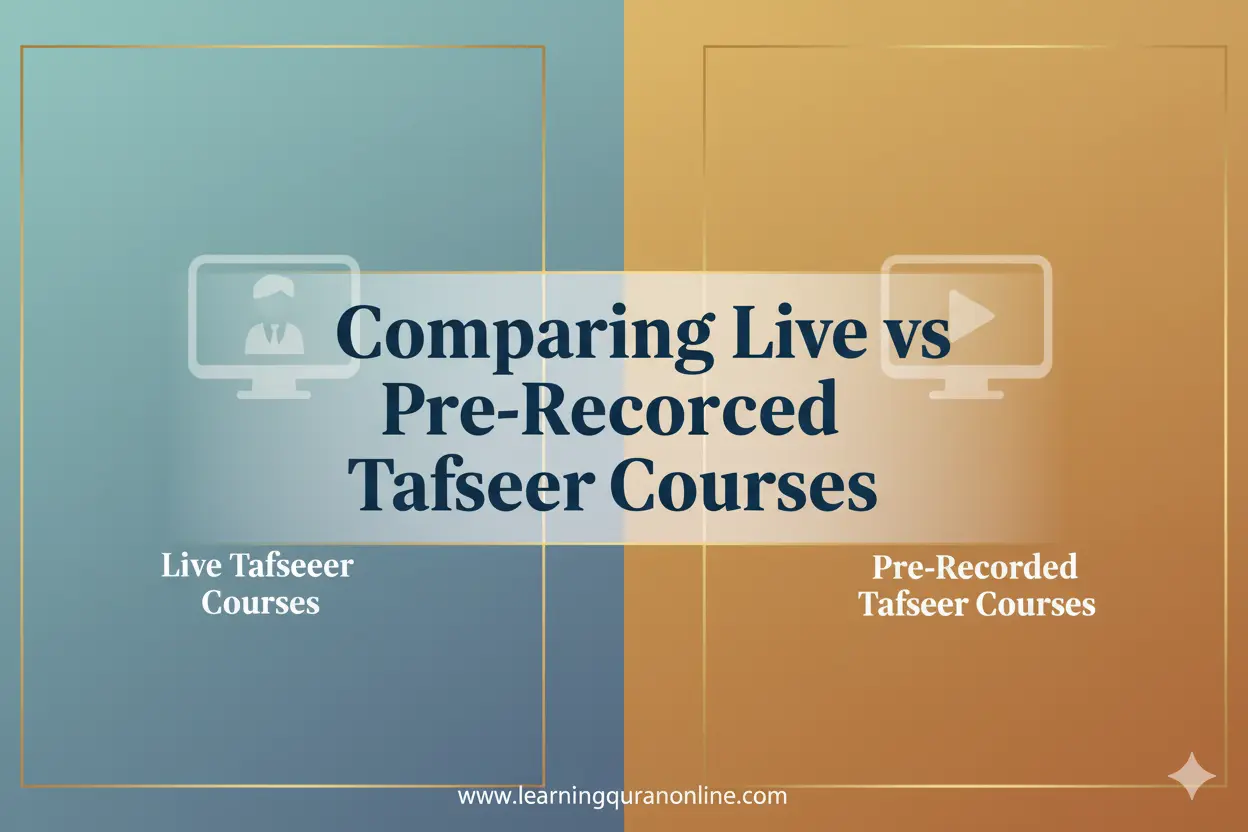Table of Contents
ToggleWhat is Idgham?
Idgham (إِدْغَام) literally means “to merge” or “to insert.” In Tajweed, Idgham occurs when one letter with sukoon (most commonly noon sakinah or tanween, or meem sakinah) is followed by another letter and the two letters are merged into a single sound. The result is either with ghunnah (nasalization) or without ghunnah depending on the following letter. Idgham makes recitation smooth, fluent, and follows the prophetic method of recitation.
Why Idgham Matters in Tajweed
Proper application of Idgham affects meaning, rhythm, and sound. Misapplying Idgham can lead to incorrect pronunciation and sometimes even a change in meaning. Good command of Idgham also enhances fluency, improves listening comprehension, and is a key part of refining one’s qira’ah (recitation).
Types of Idgham
There are two primary contexts in which Idgham occurs:
- Idgham of noon sakinah (نْ) and tanween (ــًــٍــٌ).
- Idgham of meem sakinah (مْ) — often called Idgham Shafawi (the labial merging).
Idgham for Noon Sakinah and Tanween
When noon sakinah (نْ) or tanween is followed by any of six letters, merging occurs. These six letters are: ي (Ya), ر (Ra), م (Meem), ل (Lam), و (Waw), ن (Noon). They are often memorized together as the mnemonic “يرملون” (Yarmaloon).
Idgham with Ghunnah (nasalization)
Four of the six letters cause Idgham with ghunnah (a nasal sound held for approximately two counts): ي (ya), ن (noon), م (meem), و (waw). When noon sakinah or tanween precedes any of these letters, you merge the noon/tanween into the following letter and apply a nasalization (ghunnah).
Examples (Arabic and transliteration):
- مَنْ يَعْمَلُ (man yaʿmalu) — noon sakinah + ya → pronounced as a merged ya with ghunnah.
- مِنْ نَافِلَةٍ (min nāfilah) — noon sakinah + noon → merged into a doubled noon with ghunnah.
- مِنْ مَغْفِرَةٍ (min maghfirah) — noon sakinah + meem → merged into meem with ghunnah.
- مِنْ وُجُوهٍ (min wujūhin) — noon sakinah + waw → merged into waw with ghunnah.
Idgham without Ghunnah
Two letters, ر (ra) and ل (lam), cause Idgham without ghunnah. In this case the noon or tanween is merged into the following letter, but there is no nasalization; the sound is produced cleanly without a nasal hold.
Examples:
- مِنْ رَبِّهِ (min rabbihi) — noon sakinah + ra → merged into ra without ghunnah.
- مِنْ لَدُنْهُ (min ladunhu) — noon sakinah + lam → merged into lam without ghunnah.
Idgham Shafawi — Meem Sakinah Followed by Meem
Idgham Shafawi occurs when meem sakinah (مْ) is followed by a meem (م). The rule is straightforward: merge the meem sakinah into the following meem and apply ghunnah (nasalization) for approximately two counts. The resulting sound is one elongated meem with shaddah (ّ) and nasal quality.
Example:
- يَأْمُرُهُم مَّن (ya’muruhum man) — meem sakinah + meem → merged into a doubled meem with ghunnah.
- أَلَمْ مَّا (alam ma) — in connected speech, meem saakinah followed by meem merges with ghunnah.
Other Relevant Blogs:
- Tajweed Rules for Qalqalah
- Tajweed Rules for Ghunna
- Tajweed Rules for Meem Saakin
- Tajweed Rules for Noon Saakin and Tanween
- Tajweed Rules for Stopping and Starting
- Tajweed Rules for Madd
- Tajweed Rules for Ikhfa
Signs and Mushaf Symbols Related to Idgham
The Qur’anic mushaf often provides visual cues to help reciters apply tajweed rules correctly. Common symbols include:
- Small letters or colored markers showing where to apply Idgham.
- Ghunnah signs and shaddah (ّ) indicating doubling and nasalization.
- Stop (waqf) and pause signs that may affect whether Idgham is applied (context matters).
Note: Idgham only applies when the letters occur in connected recitation (wasl). If you stop at the preceding word (waqf), the rule may change (e.g., you might pronounce the noon fully if you stop).
How to Practically Apply Idgham — Step by Step
- Identify if the letter before a word is noon sakinah (نْ) or tanween (ً /ٍ /ٌ) or meem sakinah (مْ).
- Look at the first letter of the following word to see if it is one of the Idgham letters (ي، ر، م، ل، و، ن) or if it is meem for idgham shafawi.
- If it is a letter of idgham, determine whether it requires ghunnah (ي ن م و) or not (ر ل).
- Merge the sounds: do not pronounce the noon or meem separately; instead, blend it into the following letter. Apply ghunnah if required, hold for two counts, and apply shaddah when the resultant letter is doubled.
- If you pause (waqf) before the following word, do not apply idgham; pronounce the noon or tanween clearly (izhar) unless other rules apply.
Common Mistakes to Avoid
Even learners with good Arabic may make errors with Idgham. Watch for:
- Applying ghunnah where it shouldn’t be (e.g., merging into ra or lam with nasalization).
- Failing to merge at all — pronouncing both letters separately when idgham should apply.
- Over-applying idgham when stopping in recitation — remember waqf can change the rule to izhar.
- Not holding ghunnah long enough (should be approximately two counts) or holding it too long and disturbing rhythm.
Practice Tips and Exercises
Improving Idgham takes listening, imitation, and repetition. Try these practical exercises:
- Listen to qualified qārī’ (reciters) and mimic their application of Idgham in ayahs containing noon sakinah, tanween, and meem sakinah.
- Use slow recitation to isolate the merging point, then gradually increase speed while maintaining accuracy.
- Record yourself reciting and compare against a reliable recitation to spot idgham mistakes.
- Practice pairs of words that demonstrate each type of idgham (with ghunnah, without ghunnah, shafawi) until the merging becomes natural.
- Learn the mnemonic “يرملون” to quickly recall the six letters of idgham for noon sakinah/tanween.
Benefits of Mastering Idgham
Mastery of Idgham enhances Qur’anic recitation in several ways:
- Improves clarity and authenticity of recitation.
- Prevents mispronunciation that can alter meaning.
- Creates a melodious and fluent delivery that reflects proper tajweed.
- Helps with memorization by providing correct phonetic grouping.
Learning Idgham Effectively — Final Recommendations
Idgham is best learned through guided practice with a trained teacher who can correct subtle errors in ghunnah, merging, and timing. Regular listening to skilled reciters and consistent drilling will make the rules instinctive. For structured lessons and one-to-one guidance, consider reputable online Quran classes, where qualified instructors can evaluate your recitation and give personalized feedback. Learning Quran Online provides professional tajweed instruction for learners at all levels.
Conclusion
The Tajweed Rules for Idgham are central to proper Qur’anic recitation. Recognizing when to merge, whether to apply ghunnah, and how to hold the merged sound takes practice, but the reward is a more accurate and beautiful recitation. Use the mnemonic “يرملون” to remember the noon/tanween idgham letters, practice idgham shafawi for meem-meem merging, and always consult a qualified teacher to refine your makhārij and ghunnah. With regular practice and attention to the rules outlined above, you will noticeably improve your recitation and preserve the intended meanings of the Qur’an.

